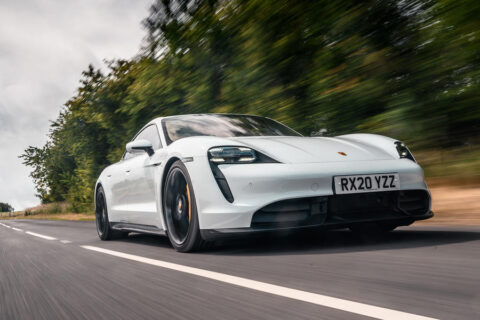“It’s the same reason why a lot of super-sports cars today have a mid-engine design, with the engine behind the driver. With today’s battery cell technology, the batteries are the biggest and heaviest part of the car – and this could be true for the next decade or so – so we developed what we call the e-core battery design. Packaging-wise and centre of gravity-wise, it’s more or less a copy of a mid-engine design.”
Steiner added that the design also aids the weight distribution and balance, especially with the Mission R concept’s two electric motors – one on each axle – biased towards rear-driven power. But while the Mission R concept uses a specially adapted platform, Steiner echoed Blume by ruling out such an architecture for production models.
“There is no platform unchanged by electrification, but the only platform within our portfolio that might not change that much would be for mid-engined cars like the Boxster and Cayman,” said Steiner. “Ten years ago, we started with prototypes of electrification with this mid-engined layout because you could use the space of the engine and transmission for the battery.
“But we decided within Porsche, starting with the Taycan, that we will do no conversion-type design, with space for an internal combustion engine, plug-in hybrid or fully electric options, because there is always some compromise in weight, package and other dimensions.
“So even for mid-engined cars, we still see a good reason to just design a full-electric platform. That might change, but not in the next few years.”

